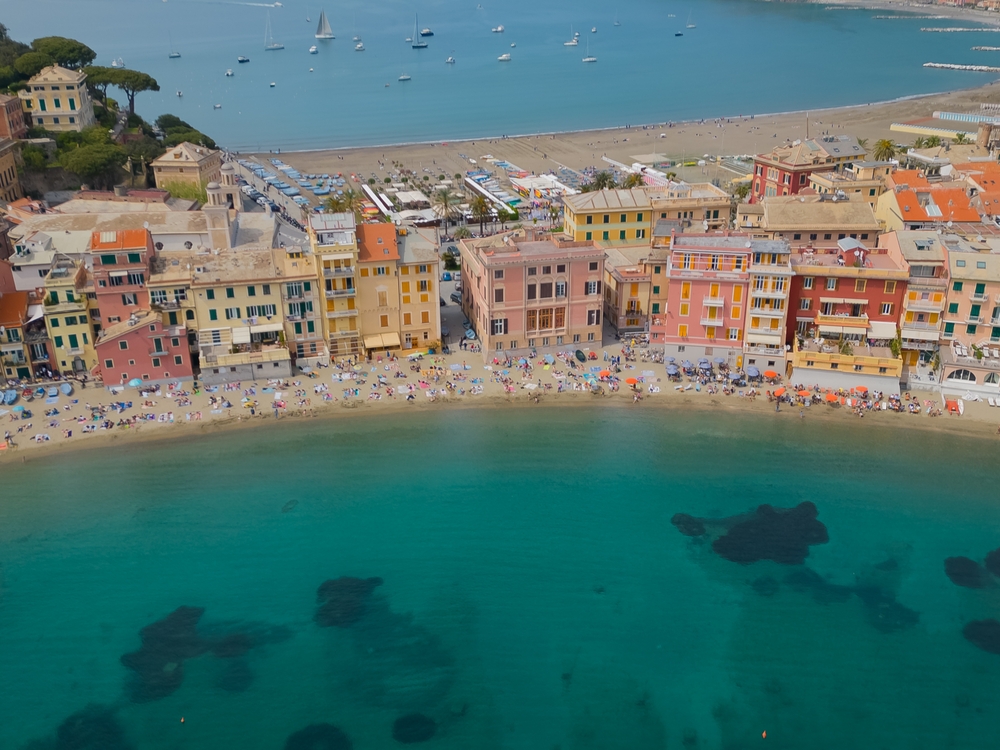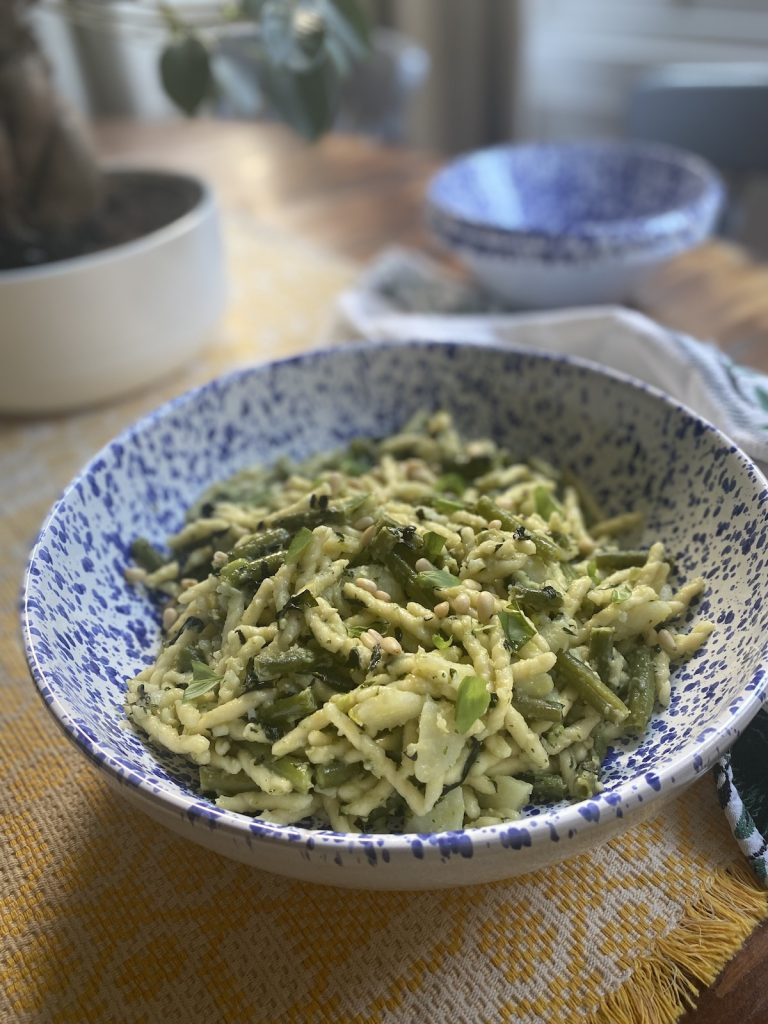As part of a series I have called “Eating Italy”, I am making one dish from each of the twenty Italian regions. My aim is to showcase the unique cuisine from each region, which is one of the things I find so fascinating about Italian cuisine – that each region has its own flavours and traditions, but what ties the dishes of each region together is the use of seasonal and local ingredients.
The Birthplace of Pesto
For the region of Liguria – the birthplace of pesto – I had to make the classic Ligurian dish of trofie pasta with pesto alla genovese, potato, and green beans. In Italy, pesto is typically eaten in the summer months – the vibrant colour and aromatic, fresh flavours complement the sunshine and abundance of green that is seen across olive groves and fields.

Ligurian Climate
Liguria is both a mountainous and coastal region – the Apennines and part of the Alps run through the region, and it is home to numerous fishing villages, including the iconic Cinque Terre villages with their coloured buildings contrasting beautifully against the crystal-clear blue seas. The Ligurian climate and combination of rocky terrain and coastal sea-air provide the perfect growing conditions for crops such as delicate basil.
The town of Pra’ is said to be home to the best basil grown in Liguria – named l’oro verde della Liguria (the green gold of Liguria). The basil cultivated in Pra’ is said to have unique organoleptic features, and its small, curved leaves, delicate scent and intense flavour distinguish it from other basil plants. Il pesto di Pra’ is a family-run business that produces pesto using only basil grown in Pra’ – they say the microclimatic conditions and farming expertise give the basil its unique characteristics.
Pestare
The word pesto comes from the Italian verb pestare, meaning “to pound” or “to crush”. That is why I think it is important to use a pestle and mortar when making pesto. To me, the process of using a pestle and mortar is part of the recipe and a tradition we should try to keep alive. You could use food processor or blender, but, if you have one, I would highly recommend that you use a pestle and mortar. It is surprisingly low effort, and it is worth it for the aroma alone!
Trofie with pesto alla Genovese, potatoes and green beans

Trofie al pesto con patate e fagiolini
Despite being a coastal region, many of Liguria’s dishes are vegetable based. There are, of course, plenty of seafood dishes, but humble dishes like this one are a staple in the Ligurian cuisine. The pesto recipe that I use is one that I first saw on Samin Nosrat’s Netflix series “Salt Fat Acid Heat” (based on her book of the same name). In the “Fat” episode, a Ligurian, Lidia Caveri, shares her family recipe for pesto. The importance of fat to flavour dishes is emphasised and something that we see is celebrated in pesto – with the cheese, olive oil, and pine nuts combining with the delicate basil to create something wonderful.
Ingredients (serves 4):
1 garlic clove – peeled
30g or 1/3 cup pine nuts
70g or 2 cups basil leaves
Sea salt
60g or 2/3 cup Parmigiano Reggiano, finely grated
30g or 1/3 cup Pecorino, finely grated
80ml or 1/3 cup extra virgin olive oil
300g-400g trofie pasta
100g green beans, trimmed
1 medium potato, peeled and thinly sliced
Method:
- To make the pesto, start by adding the garlic to the pestle and mortar and crush.
- Add the pine nuts and continue to crush.
- Once a smooth paste has formed, add the basil leaves, along with a generous pinch of sea salt (this will help to break down the basil leaves).
- Continue to pound the mixture with the pestle and mortar until the basil has integrated into the paste.
- Stir in the Parmigiano, pecorino and olive oil.
- Boil the trofie, green beans and potato in the same pan for around 10 mins. Drain, and mix into the pesto, with a little bit of the pasta water.
- Serve with a drizzle of olive oil and more Parmesan/pecorino. Buon appetito!
If you have any leftover pesto, make sure to cover it with olive oil to preserve it before refrigerating.




Natalia
Enjoyed your article “How to See the Cinque Terre”, and the equally refreshing Trofie Al Pesto E Fagiolini recipe. My wife is diabetic, and counseled to eat 3 meatless dinner a week. I found your pesto recipe in a search for Genoa-Ligurian pesto recipes. Genoa came to the top of my pesto list as the result of an episode of Stanley Tucci’s travelogue “Searching for Italy”, which featured Pesto Genovese, for which I had no recipe. What drew my attention to your Ligurian pesto recipe was the Samin Nosrat connection from “Salt Fat Acid Heat”. Big fan of her culinary adventures and the technical connection to the Salt-Fat-Acid-Heat chemistry which appeals to my pharmacist brain. Our Trofie Al Pesto meal was a big hit and helped me use up some of the basil bounty in our herb garden. We live in Phoenix, AZ where basil, oregano, rosemary and curry plants seem to enjoy the heat, while we enjoy these flavor enhancing miracles in our daily sustenance of international cuisines. Thank you for sharing your food and travel adventures. Saluti – alla tua buona salute e ai tuoi viaggi sicuri !
Hello Richard! Thank you for discovering Natalia’s article and for your amazing comment! Happy travels and cooking adventures! Grazie di cuore.
Ciao Richard! Grazie mille for your lovely comment – it’s so nice to hear that you enjoyed the recipe, and what a great way to use some of your homegrown basil! I have a Genoa diary coming soon, which I hope you’ll enjoy.
Grazie di cuore,
Natalia